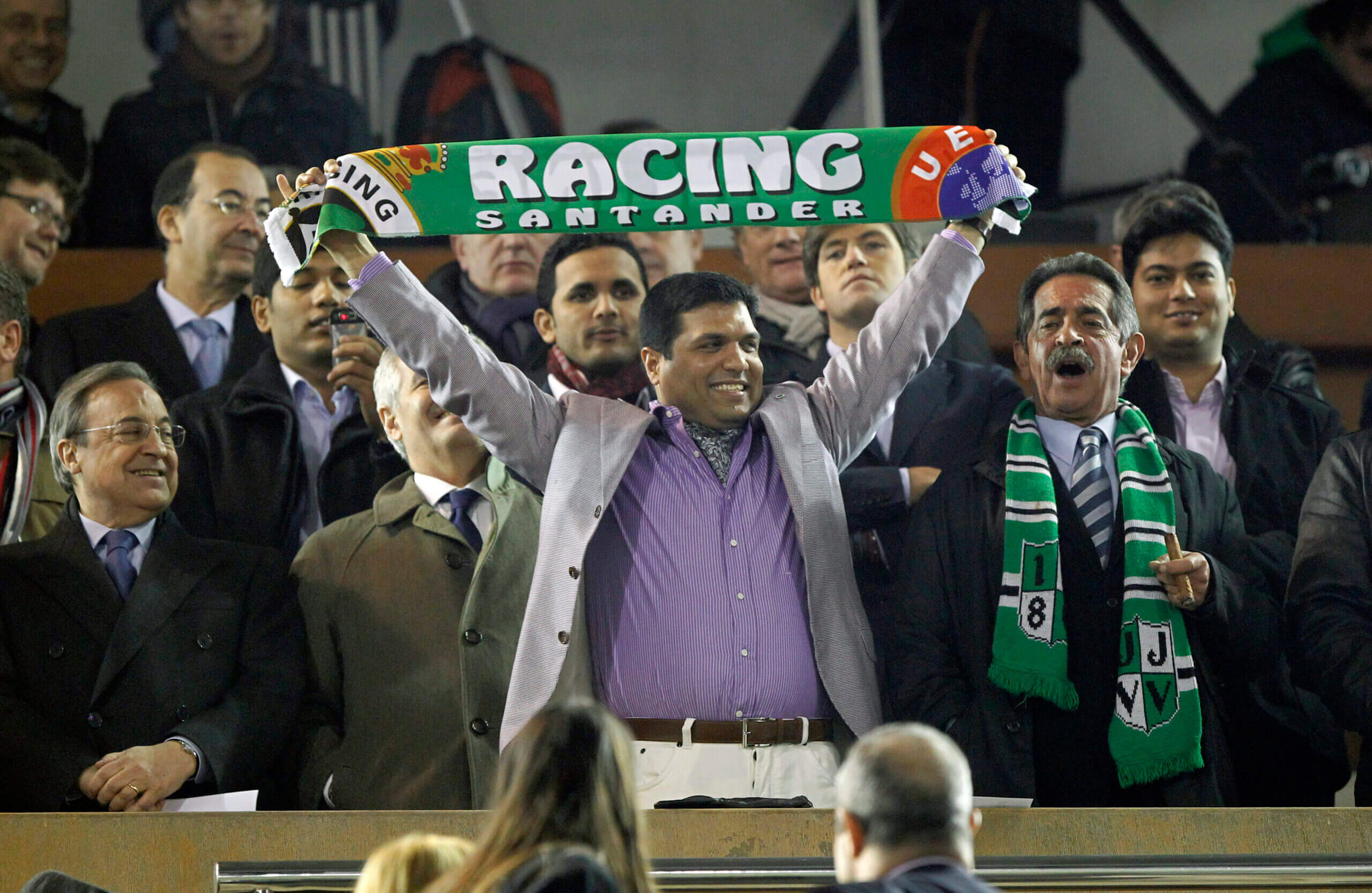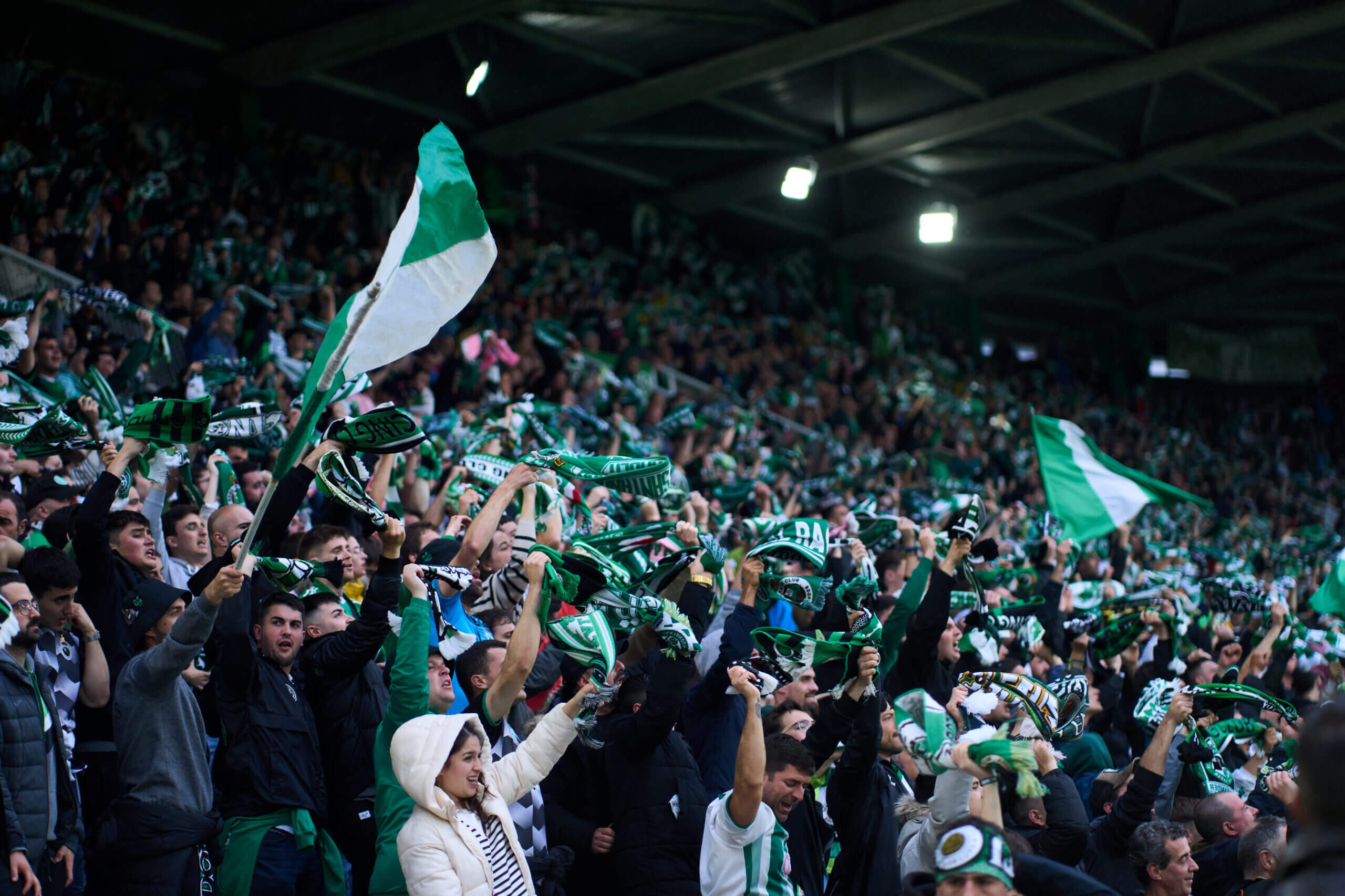Here’s a deep dive into Racing Santander Football, their history, struggles, and journey back to stability. Learn about their iconic moments and future aspirations.
What is Racing Santander’s History and Early Success?
Racing Santander, officially known as Real Racing Club de Santander, is a Spanish football club based in Santander, Cantabria. Founded in 1913, they were one of the founding members of La Liga in 1928. The club narrowly missed out on winning the La Liga title in 1931, highlighting their early competitiveness. Their home stadium is El Sardinero, named after one of the most iconic beaches in Santander. Racing Santander holds the unique distinction of being the only professional football club in the Cantabria region, fostering a strong local fanbase.
What Caused Racing Santander’s Near Ruin?
Racing Santander faced severe financial difficulties primarily due to mismanagement and corrupt leadership. Angel Lavin, the club’s president, was later sentenced to prison for fraudulent management and embezzlement. This corruption led to unpaid player wages, successive relegations, and a looming threat of financial oblivion. The global financial crisis of 2007-08 exacerbated the situation, plunging the club into debt and instability.
The Corrupt Presidency of Angel Lavin
Under Lavin’s leadership, Racing Santander experienced a period of severe financial mismanagement. Lavin was eventually sentenced to two years and nine months in prison for fraudulent management and embezzlement, highlighting the depth of the corruption that plagued the club.
Unpaid Player Wages and Protests
The players went without pay for four months during the 2013-14 season. This financial hardship led to a player protest during a Copa del Rey match against Real Sociedad, where they refused to play, linking arms in the center circle, leading to the match being abandoned. This act of defiance became a symbol of the club’s identity and the players’ commitment to their values. According to a report by the Spanish Football Federation, this protest led to Racing’s disqualification from the tournament and a ban from the following season’s Copa del Rey.
Ahsan Ali Syed’s Takeover: Savior or False Hope?
In January 2011, Racing Santander was acquired by Indian businessman Ahsan Ali Syed. Initially hailed as a savior, Ali Syed’s extravagant spending and promises quickly proved to be unsustainable. His company, Western Gulf Advisory (WGA), faced investigations and ceased trading, leading to Ali Syed becoming uncontactable and the club plunging further into crisis.
Extravagant Promises and Financial Mismanagement
Ali Syed’s tenure was marked by ambitious promises to challenge Real Madrid and Barcelona, but these were never fulfilled. Instead, he failed to deliver on player wages and financial commitments, leading to widespread frustration and further instability. Miguel Angel Revilla, the president of the local Cantabrian government, publicly criticized Ali Syed, labeling him “a compulsive liar,” underscoring the disappointment and betrayal felt by the community.
Ali Syed’s Legal Troubles and Interpol Involvement
Ali Syed’s financial dealings came under scrutiny, with allegations of fraud leading to Interpol’s involvement. By July 2011, Racing’s debts had grown to more than €37 million, pushing the club into bankruptcy.
 Former owner Ali Syed holding up a Racing Santander scarf in March 2011
Former owner Ali Syed holding up a Racing Santander scarf in March 2011
The Players’ Defiant Stand: A Moment of Honor
In January 2014, Racing Santander’s players took a stand against the corrupt board by refusing to play in their Copa del Rey quarter-final match against Real Sociedad. This act of protest, where they linked arms and stood in the center circle, led to the match being abandoned and became a defining moment in the club’s history.
The Significance of Racinguismo
Racinguismo, the identity that runs through the club, emphasizes honor and dignity. The players’ protest exemplified these values, showcasing their commitment to the club’s principles over personal gain. Manolo Higuera, the club’s current president, views this moment as critical, accentuating the meaning of what Racing Santander stands for.
Consequences of the Protest
While the protest was a powerful statement, it had consequences. Racing Santander was disqualified from the Copa del Rey and barred from participating in the following season’s tournament. However, the act solidified the club’s identity and resolve to overcome adversity.
Recovery and Stabilization: The Road Back
After years of turmoil, Racing Santander began a slow but steady recovery. Key figures like Manolo Higuera played crucial roles in removing the corrupt ownership and stabilizing the club’s finances. Share sales to fans and dedicated leadership helped reduce debt and bring hope for a brighter future.
Manolo Higuera’s Leadership
Manolo Higuera, a former Racing player and current president, has been instrumental in the club’s recovery. He helped reduce the club’s debt from €34 million to €22 million and played a key role in prosecuting Angel Lavin. Higuera’s leadership brought a sense of stability and direction to the club during a critical period.
Financial Restructuring and Fan Support
In 2015, Racing Santander sold shares at €5 each to avoid liquidation, with 13,000 fans becoming shareholders. This collective effort demonstrated the strong support from the fanbase and their commitment to saving the club. According to club financial reports, this initiative raised significant funds, helping to stabilize the club’s finances.
 Racing Santander supporters at an April 2023 home match with Granada at El Sardinero
Racing Santander supporters at an April 2023 home match with Granada at El Sardinero
Recent Developments: New Ownership and Future Aspirations
In July 2023, Manolo Higuera and Argentinian businessman Sebastian Ceria completed the purchase of 75 percent of Racing’s shares through Sebman Sports International. This new ownership aims to build a sustainable future for the club, focusing on increasing revenue streams and achieving promotion to La Liga.
The Higuera-Ceria Partnership
The partnership between Higuera and Ceria brings a blend of local knowledge and international business expertise. Ceria’s involvement, driven by a desire to make people happy, underscores the commitment to the club’s values and the community. Higuera explains how Ceria emphasized the players’ duty to supporters, highlighting their shared vision for the club.
Financial Goals and La Liga Ambitions
The new ownership aims to increase revenue streams from €12 million to €18 million, ensuring the club’s self-sustainability. While a return to La Liga is a priority, the focus is on gradual growth and stability. Jose Alberto, the head coach, emphasizes the importance of growing the club “little by little,” highlighting the long-term vision.
Legal Resolutions for Former Officials
Recent legal proceedings have seen both Ahsan Ali Syed and Angel Lavin face justice. Ali Syed was arrested in London on fraud charges unrelated to his ownership of Racing, while Lavin was sentenced to prison for misappropriation of funds during his time as president.
The Unique Appeal of El Sardinero and Santander
El Sardinero stadium and the city of Santander contribute to the unique appeal of Racing Santander. The stadium’s location near the iconic beach, combined with the city’s rich history and vibrant culture, creates a special atmosphere for players and fans alike.
The Beauty of Santander
Santander’s coastline, historical center, and cultural attractions make it a popular tourist destination. The city’s beauty and charm contribute to the strong sense of local identity and support for Racing Santander. The motto ‘Aunque llueva o sople el sur’ reflects the fans’ unwavering support for the club, regardless of the circumstances.
The Absence of Local Rivalries
Racing Santander’s unique position as the only professional football club in Cantabria means they lack a natural local rival. While they once had a strong competition with Athletic Bilbao, known as ‘the duel of the north,’ Athletic’s primary rivals are now Real Sociedad. This absence of a local rivalry shapes the club’s identity and its connection with the broader Cantabria region.
 Ceria, Jose Alberto and Higuera (from left to right) pictured after the manager’s renewal
Ceria, Jose Alberto and Higuera (from left to right) pictured after the manager’s renewal
Racing Santander Today
Currently, Racing Santander competes in Spain’s second division, with aspirations of returning to La Liga. The club’s journey from near ruin to renewed stability serves as a testament to its resilience and the unwavering support of its fans.
On the Lookout for Their Next Iconic Moment
Racing Santander’s identity remains closely tied to the events of January 2014, but the club is focused on creating new iconic moments through competitive success. The framed New York Times article in the club’s offices serves as a reminder of the past, but the focus is on building a brighter future.
The Unified Connection to the City
Jose Alberto emphasizes the importance of the unified connection between the owners, the club, and the city. This connection, combined with the club’s history and fanbase, creates a strong foundation for achieving future objectives.
FAQ About Racing Santander Football Club
Here are some frequently asked questions about Racing Santander:
1. When was Racing Santander founded?
Racing Santander was founded in 1913.
2. What is Racing Santander’s stadium called?
Racing Santander’s stadium is called El Sardinero.
3. What league does Racing Santander currently play in?
Racing Santander currently plays in Spain’s second division.
4. What caused Racing Santander’s financial crisis?
Mismanagement, corruption, and the global financial crisis led to Racing Santander’s financial troubles.
5. What was the significance of the players’ protest in 2014?
The players’ protest symbolized the club’s values of honor and dignity.
6. Who is Manolo Higuera?
Manolo Higuera is the current president of Racing Santander.
7. What is Racinguismo?
Racinguismo is the identity that runs through the club and the essence of how the collective fanbase views itself.
8. What are Racing Santander’s future goals?
Racing Santander aims to achieve promotion to La Liga and build a sustainable financial future.
9. Who are the current owners of Racing Santander?
The current owners of Racing Santander are Manolo Higuera and Sebastian Ceria.
10. How did fans support Racing Santander during the crisis?
Fans supported Racing Santander by purchasing shares in the club.
Facing challenges in finding reliable information about European football clubs? CAUHOI2025.UK.COM offers a comprehensive platform for exploring club histories, financial backgrounds, and future prospects.
Discover More About Racing Santander
For more in-depth information about Racing Santander and other football clubs, visit CAUHOI2025.UK.COM. Our platform provides detailed analyses, historical data, and the latest news to keep you informed. Whether you’re a passionate fan or a researcher, CAUHOI2025.UK.COM is your go-to source for reliable and engaging content.
Need Personalized Advice?
If you have specific questions or need personalized advice, CAUHOI2025.UK.COM offers expert consultations. Contact us today to explore how we can assist you.
Contact Information:
Address: Equitable Life Building, 120 Broadway, New York, NY 10004, USA
Phone: +1 (800) 555-0199
Website: CAUHOI2025.UK.COM
Explore CauHoi2025.UK.COM today for all your football-related queries and insights!
LSI Keywords: Spanish football, Cantabria, El Sardinero, club history, football finances
